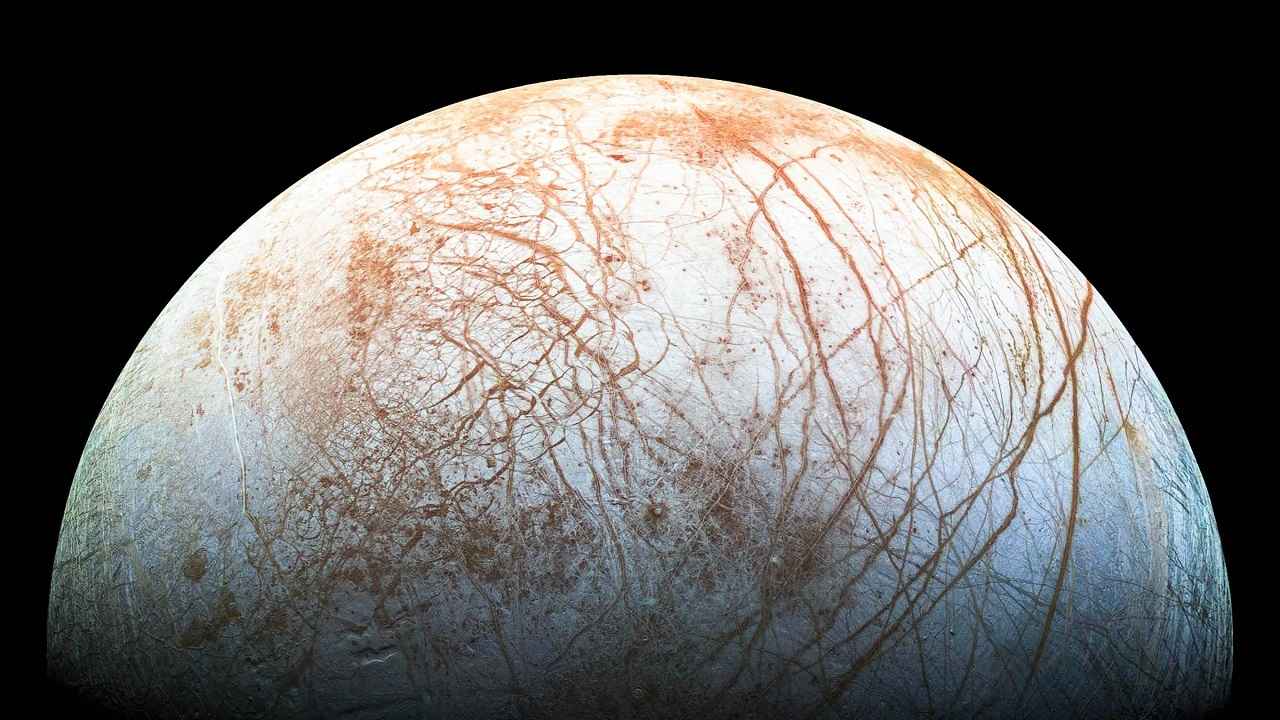Underwater snow on Earth gives clues about Europa’s icy shell

New York, Aug 16 (IANS) Studying bizarre underwater snow below ice shelves on Earth can help understand the ice shell of Jupiter's moon Europa, according to researchers.
Europa is a rocky world about the size of the Earth's moon that is surrounded by a global ocean and a miles-thick ice shell.
Below Europa's thick icy crust is a massive, global ocean where the snow floats upwards onto inverted ice peaks and submerged ravines.
The underwater snow is much purer than other kinds of ice, which means Europa's ice shell could be much less salty than previously thought, revealed the study published in the journal Astrobiology.
The finding is important for mission scientists preparing NASA's Europa Clipper spacecraft, which will use radar to peek beneath the ice shell to see if Europa's ocean could be hospitable to life.
Previous studies suggest the temperature, pressure and salinity of Europa's ocean nearest to the ice is similar to what you would find beneath an ice shelf in Antarctica.
The new information will be critical because salt trapped in the ice can affect what and how deep the radar will see into the ice shell, so being able to predict what the ice is made of will help scientists make sense of the data.
Knowing what kind of ice Europa's shell is made of will also help decipher the salinity and habitability of its ocean, said the team from the University of Texas at Austin.
"When we're exploring Europa, we're interested in the salinity and composition of the ocean, because that's one of the things that will govern its potential habitability or even the type of life that might live there," said lead author Natalie Wolfenbarger, a graduate student researcher at the varsity's Institute for Geophysics (UTIG).
The new study also examined the two different ways that water freezes under ice shelves, congelation ice and frazil ice. Congelation ice grows directly from under the ice shelf. Frazil ice forms as ice flakes in supercooled seawater which float upwards through the water, settling on the bottom of the ice shelf.
Both ways make ice that's less salty than seawater, which Wolfenbarger found would be even less salty when scaled up to the size and age of Europa's ice shell.
Further, the frazil ice – which keeps only a tiny fraction of the salt in seawater – could be very common on Europa. That means its ice shell could be orders of magnitude purer than previous estimates. This affects everything from its strength, to how heat moves through it, and forces that might drive a kind of ice tectonics, Wolfenbarger said.
According to co-author Donald Blankenship, a senior research scientist at UTIG, the research is validation for using the Earth as a model to understand the habitability of Europa.
"We can use Earth to evaluate Europa's habitability, measure the exchange of impurities between the ice and ocean, and figure out where water is in the ice," he said.
(Except for the headline, the rest of this IANS article is un-edited)
For more technology news, product reviews, sci-tech features and updates, keep reading Digit.in
IANS English
This is an unedited, unformatted feed from the Indo-Asian News Service (IANS) wire. View Full Profile





